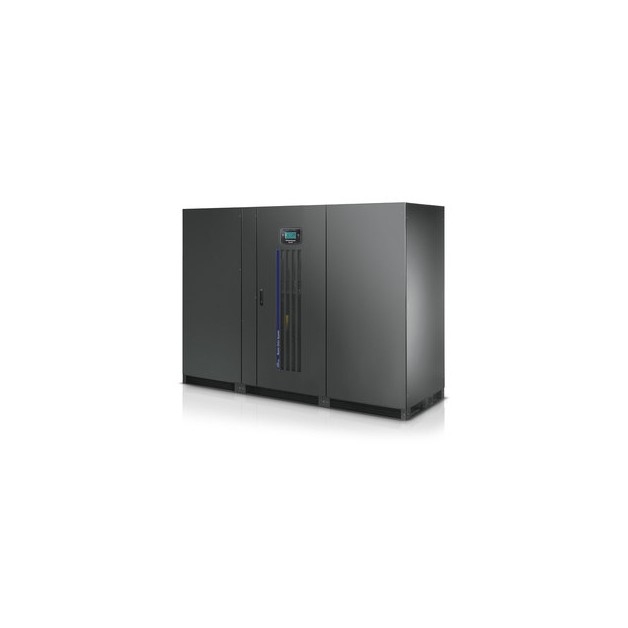Recent design philosophies for data centres are pushing towards making systems operate on by-pass lines not only in the event of an emergency, but as an alternative to “ON-Line” mode, thus improving system efficiency. For this reason power circulation through a single line (centralised bypass), eliminates all problems connected with current distribution, which must be ensured in the event of the operation of UPS modules in parallel with distributed by-passes. The greater the power rating of the UPS the exponentially greater the risk of minimal impedance differences in the by-pass lines generating large imbalances in current circulation, with a serious risk of protection cut-in, compromising power supply continuity. With the centralised by-pass the static circuit is single and independent and the current flows through a single channel, ensuring immunity from The static bypass is a support device aimed at ensuring power continuity in the event of inverter failure. In the event of N UPS configured in parallel the failure of a single inverter module should automatically exclude it from the parallel system, ensuring the correct operation of the other units and the reliability of the system.
For this reason automatic switching to by-pass lines takes place only when there is a serious fault with the inverters or due to external forces, such as a short circuit downstream of the system.
These events are both rapid and unpredictable and, based on the power available on the line, can generate short circuit currents that can be xtremely high. In the event of distributed parallel configurations where N static bypasses are arranged in parallel, minimal differences (even in the order of fractions of a millisecond), can generate uncontrolled transients and current flow between UPS units such as to trigger protection devices or even damage the by-pass thyristors. Riello UPS are equipped with sophisticated parallel control logics that ensure synchronism between the various units arranged in parallel under all operating conditions. The Riello MSB centralised bypass in any case ensures complete immunity from any problem connected with switching synchronism between modules even in the most extreme cases as long as the static module is single and independent.
In addition, differently from a distributed parallel configuration of the same power rating, the centralised by-pass can be oversized to guarantee increased overload capacity and the ability to withstand short circuits.
The ventilation system for the MSB static by-pass is designed to guarantee operation even in the event of the failure of several fans. In order to constantly monitor the status of the fans, a control circuit can be provided to control the operation of each individual ventilation fan.
